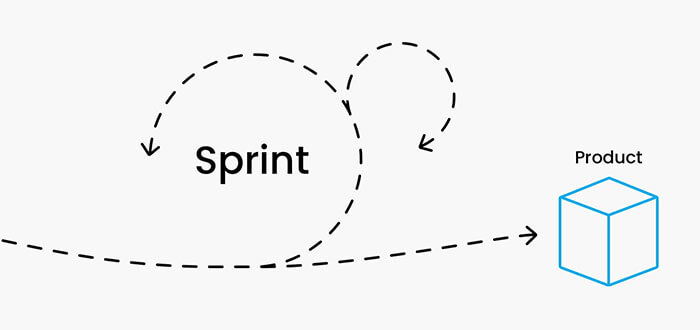Agile, seamless integration is key to avoiding future commercial failure
In many cases, disparate digital tools don’t always work well together, or even at all. Valuable time and budgets are wasted on trying to integrate technologies that were never designed to talk to one another. Organisations are even having to write-off expensive tools that they should never have invested in.
Flexible, agile, constantly evolving enterprise architectures need to be designed and implemented to support new and existing digital tools, which must be carefully selected to work perfectly with one another to maximise efficiency.
Customer experiences change, technologies evolve, and the strategies organisations deploy don’t stand still, so it is essential that everything is joined-up so that all of the moving parts synchronise.
Failing to adopt this measured, joined-up approach to business technology can have serious impacts. There will be a lot of wastage internally, with ROI and efficiency across the workforce taking a hit as staff expend valuable time and energy on trying to make systems interact: often square pegs in round holes.
Products and services could lag behind competitors, perhaps not as innovative as they should be; or lacking the same dynamic they’d have had if everything had been joined up – with missed opportunities to upsell hitting the bottom line.
Adopting an MVP approach
Digital facilitates effective, cost sensitive, iterative amendments. When organisations are working to an agile approach, adapting to the changing environment rather than locking everything down, it is possible to inject more value into their business model.
Many businesses fail to appreciate the value of constantly reviewing and improving their digital offer. A culture of continuous improvement lays the foundations for commercial success.
At Selesti, we work in an agile way: in two-weekly sprints. This allows us to make rapid amendments should existing business models change. An agile approach allows for MVP (minimum viable product), and we encourage our clients to adopt a MVP mentality.
MVP gives organisations the opportunity to measure customer reaction to their visible digital services, such as websites. They can then make informed choices about where to invest in improvements – maximising ROI and reducing wastage.
Our way of working ensures that integration and synchronisation are at the core of our clients’ business models, transforming the way they do business and unlocking value for them by reducing costs and creating a competitive advantage.
We are able to join at any point in a client’s digital journey, be it for a new website, marketing strategy, etc – with iterative changes keeping budgets under control and allowing the business to gauge how these changes inform their own customers’ journey.
Challenging current practices
Ambitious organisations need to integrate their digital technologies seamlessly in order to expand and accelerate their offer, reach and results to new levels.
The advent of Cloud computing and SaaS solutions has allowed more functionality and power to be injected into businesses. But organisations need to do a lot more due diligence to find the systems that are going to work best for them, rather than just going with the easy, most available (and often most expensive) option. They need to adopt a culture which leverages experience, performance and efficiency on an operational workforce level to optimise their overall output.
Equally, organisations must not shrug off the challenges raised by changing processes or joining up digital technologies but review their existing infrastructure.
It could be as seemingly simple as getting CRM tech to talk to account packages, or a time tracking system to integrate with production tools. Whatever the challenge when it comes to selecting the most appropriate digital technology and ensuring that it integrates with other systems across a given organisation, this is a challenge that cannot be ignored.
Seamless interaction between development and digital marketing teams – in fact, all stakeholders – is essential to ensure that this joined-up technology approach to business is a success.
This ultimately leads to deeper relationships with customers, new and innovative business models, more efficient operational processes, and better decision-making.
Digital partnerships that encourage innovation
For successful digital integration, a broad partnership approach with an external specialist consultant is essential. The more involved in their businesses clients allow their digital integration specialist to be, the better the results.
Communication and collaboration are key. The more involved an external consultant is in the digital integration process, the better the results. Without a full insight and knowledge of a client’s business practices, it is difficult for their chosen digital partner to shape business strategies to leverage growth, and deliver over and above the KPIs that have been set out.
It’s vital to find a digital partner who isn’t afraid to challenge your brief in order to find the right solution. When working with clients, we focus on what we consider to be their ‘transformation pathway’, achieved as a result of a full rewiring of their digital output.
We always consider a client’s entire digital strategy and their infrastructure to help them find new ways for it to be transformed or streamlined – joining up the various points along our clients’ digital journey.
Often what organisations think they need is very different to the outcome that we may want to deliver to them – but we always have our clients’ best interests in mind.
When a client came to us with a website brief, our insightful brief-taking process identified that they didn’t have a suitable CRM that would manage and nurture the leads that the new website would generate. We carefully considered the entire commercial journey and impact of digital marketing tools and campaigns, building a bespoke tool, integrating it within a specialist system – and ultimately saving them over £100,000.
This joined up approach saves time, money and operational headaches. At the same time, we ensure our clients think about the future and scalability of their business.
Disruptive technology
We support our clients in handling disruptive and experimental tech as it becomes an everyday reality – with the inevitable impact on business and business practices.
Selesti understands the importance of all of today’s disruptive technologies, and how they will influence digital strategy going forward as their influence grows. We’re aware of what’s current and what’s coming, and are able to advise clients on how best to prepare for the future.
This allows us to identify potential pain points, ensuring that tomorrow’s disruptive innovations aren’t overlooked; that today’s seamless integration of digital technologies has one eye on the near future.
A future where an MVP approach to experimental tech will allow organisations to quickly establish whether or not they are good for business; a future where digital technology continues to present businesses with multiple tools requiring full and cost-effective integration.


